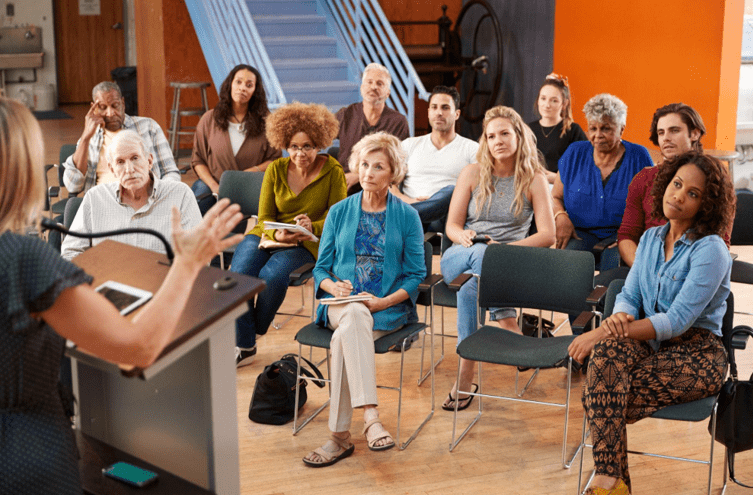Bruce Darling, President and CEO of the Center for Disability Rights: Bridging Gaps Between Lawmakers and Communities

Strong connections between lawmakers and communities are vital for a thriving democracy. When leaders actively engage with their constituents, they gain valuable insights into the issues that matter most. This mutual understanding fosters trust, encourages civic participation, and ensures that policies are rooted in the realities of everyday life. However, challenges such as communication barriers and misunderstandings often hinder this.
As stated by Bruce Darling, President and CEO of the Center for Disability Rights, overcoming these obstacles requires collaborative efforts, transparency, and planned strategies to bridge the gap. By exploring the dynamics of effective communication, community empowerment, and the lessons from successful partnerships, we can better understand the value of fostering strong connections.
Why Lawmakers and Communities Need Strong Connections
Effective collaboration between lawmakers and communities is the cornerstone of a functioning democracy. When leaders understand the concerns and priorities of their constituents, they are better equipped to create policies that reflect the needs of the people they serve. This relationship fosters trust and ensures that decision-making processes are grounded in real-world issues rather than assumptions.
Consider situations where open dialogue between legislators and citizens has led to meaningful changes, such as improved public services or infrastructure development. These outcomes demonstrate how mutual understanding can result in practical solutions that benefit both individuals and the broader community.
Barriers to Effective Communication
A significant challenge in fostering meaningful connections between lawmakers and communities lies in accessibility. Many individuals feel that their voices are unheard, often due to a lack of direct communication channels with their representatives. This gap can create frustration and alienation, particularly when critical decisions are made without adequate public input.
Miscommunication can also arise from complex policy language that is difficult for the average person to understand. When legislation is perceived as opaque or overly technical, it widens the divide between leaders and their constituents. Additionally, cultural and socioeconomic differences may hinder constructive dialogue, leaving marginalized groups underrepresented in decision-making processes. Addressing these barriers requires steps to create spaces where all voices are welcomed and understood.
Building Bridges: Strategies for Lawmakers
Lawmakers can strengthen relationships with their communities by adopting transparent and inclusive practices. Hosting regular town halls or neighborhood meetings allows leaders to engage directly with residents, fostering open dialogue and trust. These gatherings can serve as platforms for addressing concerns, sharing updates, and explaining policy decisions in a way that resonates with the public.
In today’s digital age, leveraging online tools such as social media or virtual forums can further enhance connectivity. Leaders who actively communicate through these channels demonstrate a commitment to accessibility and adaptability. Equally important is the practice of listening, where lawmakers take time to understand diverse perspectives before crafting solutions. By prioritizing meaningful engagement, they can transform governance into a collaborative effort that reflects the needs and aspirations of their communities.
Empowering Communities to Engage
Communities hold immense power when they are informed and proactive in their engagement with lawmakers. Attending public meetings, participating in local initiatives, and voicing opinions through petitions or letters can collectively create an impact. These actions demonstrate not only interest but also a commitment to shaping the policies that affect daily lives.
Grassroots efforts often catalyze meaningful change. Organized campaigns, whether focused on environmental issues or education reform, can amplify the voices of individuals who might otherwise go unheard. When people recognize their ability to influence decisions, it fosters a sense of ownership and responsibility within the democratic process. Such collective momentum ensures that lawmakers remain accountable while also encouraging more inclusive governance.
Lessons from Successful Partnerships
Examples of collaboration between lawmakers and communities highlight the potential for impactful outcomes. In cities where leaders have partnered with residents to address concerns such as affordable housing or public safety, the results have often exceeded expectations. These partnerships thrive when both parties prioritize transparency and sustained communication, creating a foundation of mutual trust.
Some initiatives stand out for their ability to unite groups around shared goals. Collaborative efforts to revitalize urban areas or improve educational opportunities often involve input from residents, local businesses, and policymakers. The success of these projects underscores the value of collective problem-solving, where everyone’s contributions are acknowledged and integrated into actionable solutions.
The Value of Bridging the Gap
When the gap between lawmakers and communities is narrowed, the ripple effects are profound. Stronger relationships lead to policies that genuinely address public needs, cultivating trust and confidence in governance. Communities that feel heard are more likely to participate actively, creating a virtuous cycle where engagement fuels better outcomes.
Beyond immediate benefits, fostering these connections builds resilience in the face of challenges. A united front between leaders and constituents ensures that solutions are both practical and sustainable. The long-term impact can be seen in communities that thrive economically and socially, serving as a testament to the power of collaboration.



